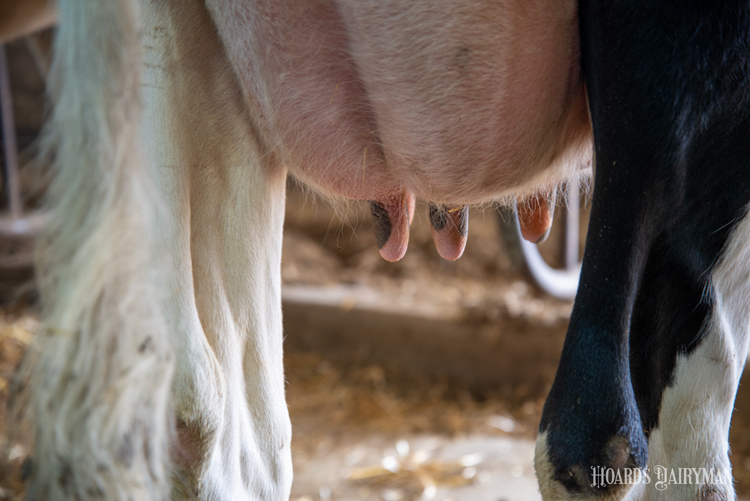
It seems elementary, but it’s an important fact to remember when we’re aiming to produce high-quality milk and maintain udder health: The way pathogens infect the udder is through the teat end.
Paul Virkler, D.V.M., of Quality Milk Production Services, touched on multiple areas that affect teat-end health during a Cornell Cooperative Extension webinar. Starting in the barn, he emphasized that poor bedding management leads to dirty cows, dirty udders, and dirty legs.
Many types of bedding can work if they keep the stall clean and dry. When there isn’t sufficient bedding to soak up manure, urine, and milk, we’re raising the chances of mastitis, said Virkler. He encouraged attendees to have someone on the farm review stall bedding levels regularly. It may be a good idea to switch that person up to have a fresh perspective; just ensure the whole team is communicating about what the bedding goals are.
Sufficient bedding, dry stalls, and clean alleyways matter for dry, prefresh, and fresh cows, too, Virkler reminded. These cows should be treated as well as the lactating herd.
In addition to bedding, he noted that stall cleanliness is often impacted by poor cow position. When cows lay too far forward, more manure stays in the bed instead of the alleyway. Then, you are relying on the person scraping stalls to always do a great job of removing that contamination from what the udder will be in contact with.
Virkler said more farms are using what he called brisket pipes, pieces of PVC that are gentler and less bulky than brisket boards, to avoid inhibiting lying time. “But we do want to position cows better,” he urged.
He noted that adjusting the neck rail does not solve this problem. It will position cows when they’re standing, but cows often scoot forward after laying down. Lowering the neck rail will actually cause more perching, Virkler said.
In the parlor
The teat end experiences the most manipulation in the parlor. We must do everything we can to keep the teat end happy, and a big part of that is the milking routine, Virkler noted. Achieve five to 10 seconds of stimulation time and 90 to 180 seconds of lag time to encourage sufficient milk letdown.
Poorly adjusted machines will also cause damage. Talk with your dealer about your goals for milking speed and cow comfort to find the right liner, he encouraged. Then, follow the ideal vacuum and pulsation rates for that liner. Virkler said the most common mistake in milking equipment is not the wrong liner but the wrong system for the liner you have.
A final point of emphasis in the parlor is how cows are dried off. Right after dry-off and right after calving are the most susceptible times for a cow to contract mastitis, Virkler said, so we must handle the teats with care when we administer dry cow treatment and/or teat sealant. From an independent evaluation his team did of employees drying cows off, Virkler said there is a lot of room for improvement in ensuring the environment is sterile, the cow is prepared, the product is administered correctly, and employees are trained and monitored well.
They developed a free, open access training platform available in English and Spanish to help farm workers improve their dry-off technique. Good teat care in the parlor is a valuable place to start improving teat-end health because the most important variable is often the people, Virkler concluded.








